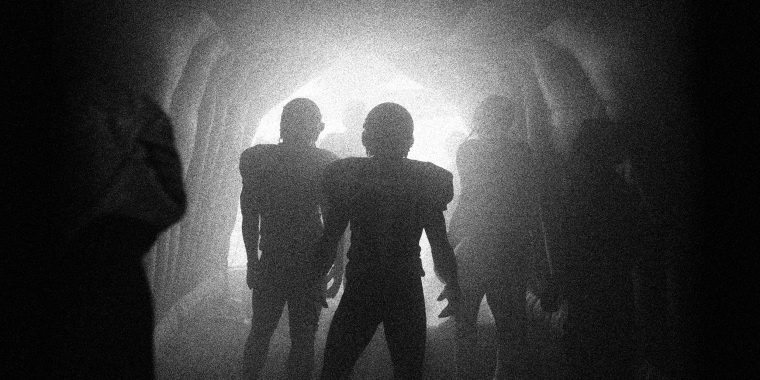You wouldn’t have hired Jesse James to stop train robberies. You’d never have turned to Bernie Madoff to clean up Wall Street. And this is why the National Football League’s contention that it will be a leading voice to stop the practice of “race-norming” used in the world of neurology and cognitive testing rings so false.
The root of race-norming tells a story in and of itself about the limits of attempting to legislate a cure for racial inequity.
The league has benefited immensely from the practice, which has been used to curve the scores of cognitive tests of Black players based on the theory that their starting baseline for intelligence is lower than that of other racial groups. With this approach, the league — according to former Black players who have sued it — has been able to deny Black athletes their share of a $1 billion concussion settlement by effectively arguing that their low cognitive scores are not due to concussions or early onset dementia but because of the color of their skin.
Given this, it makes little sense to trust the NFL to lead the charge in abolishing race-norming. The only hope is to name and shame the practice, to expose it to produce the requisite shock and outrage so many people felt when the story first came to light.
Unfortunately, much of the sports media treated these revelations, at most, as a one-day story. But it’s not. Beyond the realm of pro sports, this type of institutionalized racism in medicine has been part of this country since the first enslaved people were brought to American shores. Then it was argued by doctors that Black people had a smaller lung capacity than white people, were more likely to ward off some infections and had lower intelligence — all of which, according to the so-called science of the day, made them divinely suited for slavery. Similar arguments have been used historically for denying Black people access education, jobs and, quite famously, to integrated sports — meaning competing against whites — in the early 20th century.
One may feel horrified and even shocked by reports of the NFL using race-norming to mete out financial claims and essentially save money, but the NFL is only part of a larger problem. This practice is still very much a part of neurology and cognitive testing to this day. It's practically phrenologist pornography.
The root of race-norming tells a story in and of itself about the limits of attempting to legislate a cure for racial inequity. In the 1970s, in the aftermath of the Black freedom struggle of the previous two decades, race-norming as a phrase was first used by President Jimmy Carter’s administration in federal job aptitude tests before being implemented to round standardized test scores of Black students up to account for cultural biases in the tests as well as disproportionate poverty and underfunded schools.
It was also used by his Department of Labor as a way to even the inequities of government contracts, which had always favored white-owned companies. This practice was seen as so commonsensical that it was adopted by Ronald Reagan’s administration and was a continual practice until ending it became a right-wing cause célèbre.
In the worlds of neurology and cognitive testing, the practice and theories of race-norming not only survived but thrived.
Right-wing talk radio picked it up as a way to depict liberal social engineering. In 1991, conservative commentator George Will called it “liberalism’s apartheid of compassion.” He also wrote in his syndicated column that “such ‘remedies’ so obviously poison society.”
In response to this pressure from the right, President George H.W. Bush outlawed race-norming for government contracts and as a Department of Education practice, as part of his painfully misnamed 1991 “Civil Rights Act.”
Yet in the worlds of neurology and cognitive testing, the practice and theories of race-norming not only survived but thrived — as we can see in the instance of the NFL, where it has been used not to cure racial inequity but to expand it, more in the tradition of the phrenologists of decades past than anything that has its legacy in the civil rights struggles of the 1960s.
There is another echo here, of 1960s-era reforms that were meant to confront racism but instead codified it and even became a cudgel used to brutally enshrine it. As studies show, affirmative action programs have been far more likely to be used to advance the employment prospects of white women than Black people. Hate crime legislation is more likely to be used by prosecutors against people of color than those who commit hate crimes against them.
This is why the hope for ending the ugly neurological practice of race-norming will not come from NFL Commissioner Roger Goodell leading any kind of a charge against racism. This is a league that has just a handful of Black head coaches and executives and no Black franchise owners while 70 percent of the players are Black, with average careers lasting 3 1/2 years.
This should be a story we continue to follow and report on to hold the NFL and the medical community’s feet to the fire until the practice is altogether abolished.
It is a stark reminder that, to paraphrase an old saying, you aren’t going to tear down the master’s house with the master’s tools. Confronting systemic racism will require a rethinking of entire systems baked into the cake of this country — not by codifying racial differences in a manner that will inevitably be used against Black advancement when it inevitably falls into racist hands.

